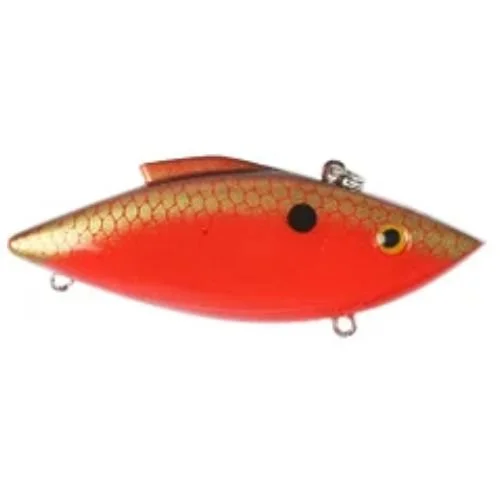East Texas Trapping With James Niggemeyer
Early in his career, bass pro James Niggemeyer transplanted himself from California to Texas, smack dab in the epicenter of the Rat-L-Trap universe. Since then, through tournament fishing, guiding, and experimentation, he’s spent thousands of hours throwing lipless crankbaits, and he continues to return to old faithful, the Original Trap. It’s available in an almost inconceivable number of colors, which can make it hard for a novice to choose. Here are his three go-to options for the period between Christmas and the spawn:
Red Shad
“This is my number one, day in and day out. It’s at its best when there’s a light stain, in the water, maybe 1 to 1 ½ feet of visibility.”
Red Craw Chartreuse Belly
“I like this one when the fish still seem to prefer something red, but when it’s overcast or the water is a little bit more stained.”
Gold Black Back
“This is a great all-around color when they’re not keyed in on crawfish. It provides more flash.”
Tackle Notes
Rod: Niggemeyer is sponsored by Phenix Rods. “I like a 7’3 medium heavy. It’s a little bit longer than the standard 7-footer. That’s useful when you need to make really long casts on the edge of grass lines, and I like a medium-heavy so you can clean the bait by ripping it or snapping it.”
Reel: Johnny Morris Platinum Signature Series baitcaster (8.3:1)
Line: 14-pound test Gamma fluorocarbon is his primary choice, but sometimes he’ll go up to 16-pound test in super-heavy cover, especially when giant fish are around.
Trebles: The Rat-L-Trap now comes with quality Triple Grip treble hooks, but when it’s time to replace them Niggemeyer likes Owner ST-35s. “It’s a Kahle-style hook with a silky gray finish that goes through the fish’s skin very easily. There’s 150 degrees between two of the points, which is wider than normal and provides a better chance of hooking fish. I use it for lipless crankbaits, square bills, even topwaters, too.”
Picking the Proper Trap
Niggemeyer uses the ½ ounce Original Rat-L-Trap at least 80 percent of the time he’s casting a lipless crankbait. “I like the overall size,” he said. “And you can retrieve it very slowly and it’ll still have the proper action.” He occasionally drops down to the ¼ ounce model, and even less often ties on the larger ¾. He knows that many of his colleagues rely upon it heavily, especially in big bass country.
With a plethora of other lipless options on the market, why is he still so fond of the OG Trap? “I love the fact that it’s such a slender bait,” he said. “There’s something about that profile that resonates and gets bit. Particularly when the water is at its coldest, it has to be the go-to. I have reeled it at such slow speeds that you can barely feel it vibrate and it still gets bites.”
He's been experimenting heavily with the new Bill Lewis Hammer Trap and finds that it complements the Original Rat-L-Trap. The newer model comes in 3/8 ounce and 5/8 ounce sizes which present profiles similar to the ½ and ¾ ounce originals. It provides a more aggressive action and what he particularly likes is the way that it stays upright on the fall. “It has an enticing shimmy on the descent,” he said.
Turning Biters into Landed Fish
Historically, the biggest problem anglers have had with lipless crankbaits was not generating bites, but rather keeping hard-fighting bass buttoned up. “You have to keep the pressure on the fish and stay with him,” Niggemeyer said. “That’s why it’s so important to use the right hook, and why I choose the Kahle-style hook over a round bend.”
When given a choice of extremes, he’d prefer to “overpower the fish” rather than play it gingerly. “When you give them too much, that’s when they throw it.”
It’s also essential to prevent the bass from jumping whenever possible. When the fish starts to breach the surface, Niggemeyer will do everything in his power to turn the head back down toward the water and keep the bass from thrashing or launching itself. It’s why he uses a medium-heavy rod instead of a medium, and he understands why some anglers feel the need for something heavier than that.”
Dial it In
“Everyone thinks that this is an idiot bait, and they can definitely generate strikes even for beginners,” he added. “But it some ways I think you need to be more attuned to your lure than with even a worm or a jig. You need to be mentally there, understand what your Rat-L-Trap is doing, and remain engaged when you are fishing it.”









